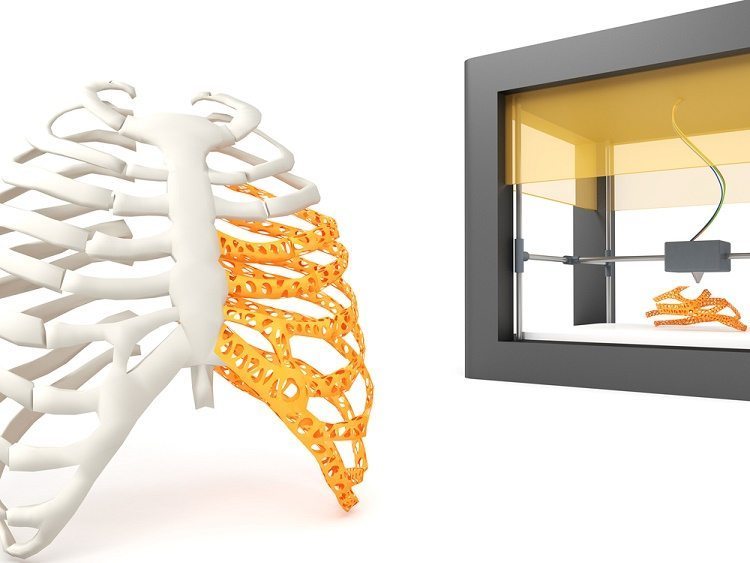Recently, 3D printing has been used to make biologically inert structures that can serve as medical implants. Now, researchers at the Delft University of Technology in the Netherlands have combined 3D printing and origami techniques to develop self-folding medical implants.
Using additive manufacturing techniques to print functional humans organs is a real scientific challenge. Viably regenerating human tissues, therefore, requires multifunctional biomaterials.
New materials made of multiple 3D-printed layers are capable of change shape when they react to an external stimulus.
The Delft research team used shape memory polymers, or “SMPs”, to create four basic models of shape-shifting: self-rolling, self-twisting, combined self-rolling and self-twisting, and wave-like strips.
Shape Memory Polymers Into Bio-implants
For use as bioimplants to replace damaged tissues, advanced materials with a complex geometry are required. “Ideally, biomaterials should be optimized,” explains Dr. Amir Zadpoor, “not only in terms of their 3-D structure but also in terms of their surface nano-patterns.”
While 3D printing enables us to make complex 3D structures, the ability to influence the surface of the structure during the manufacturing process is currently very limited.
Nanolithography techniques, for instance, generate complex nanopatterns only on flat surfaces.
“Ideally, biomaterials should be optimized . . . not only in terms of their 3D structure but also in terms of their surface nano-patterns.”
Making 3D-Printed Materials Foldable
The researchers began using shape memory polymers to enhance surface nanostructures. This material has very subtle characteristics which allow its shape to change later (i.e. after implantation), and they are used in a way reminiscent of the Japanese art of Origami.
First, multiple layers were 3D-printed on top of each other.
Then, the malleable structures were treated with an external stimulus (like a change in temperature, for example).
As a result, the Delft researchers created different shape-changing structures.
Some of the shapes were then integrated into other two-dimensional constructs to obtain forms like self-twisting, DNA-inspired structures or behaviors like programmed pattern development in cellular solids, self-folding origami, and self-organizing fibers.
“This work is just one little step towards better medical implants,” Zadpoor continues, “but we are definitely making exciting progress.”


















Comments (0)
Least Recent